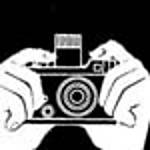Greetings Ben,
I have done a bit of searching on some comments made by Alex Imrie. It seems the upper surface wing cockades may have been "subdued". He noted the Sopwith Triplanes of Naval 10 had received orders to have PC (10 or 12) painted over the white of the middle ring.
As a guess on my part - the outer white ring on the DH 4 kit decals might be interpreting the original blue with the inner middle white ring getting a heavy coat of ultramarine to subdue it? The subdued outer ring could be in a similar lt blue as the camouflage? Is there anything in the Datafiles that covers this? Being stationed to patrol the seaway canal the blue might have been attempt to subdue the scheme even further?

". . .Many home defense machines, however, remained in their standard “day” PC10 finish. To tone down the appearance of the national markings, the white portions of the roundels and rudder stripes were often overpainted with PC10, black, red or blue. . ."
(From comments on the National markings employed in WWI by Eric Goedkoop).By the way - "The Kiel Canal (German: Nord-Ostsee-Kanal, NOK), known as the Kaiser-Wilhelm-Kanal (after Kaiser Wilhelm I), until 1948, is a 61-mile (98-kilometre) long canal in the German Bundesland Schleswig-Holstein that links the North Sea at Brunsbüttel to the Baltic Sea at Kiel-Holtenau. . ."
Also for those interested in famous Sidney Cotton,
here is a bit of fun.
















